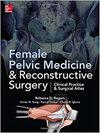一项回顾性队列研究确定办公室手术后尿路感染的危险因素
IF 1.4
4区 医学
Q3 OBSTETRICS & GYNECOLOGY
Female Pelvic Medicine and Reconstructive Surgery
Pub Date : 2022-03-01
DOI:10.1097/SPV.0000000000001151
引用次数: 0
摘要
目的本研究的目的是确定办公室膀胱镜检查和尿动力学检查(UDS)后女性人群尿路感染(UTI)的发生率和危险因素。方法回顾性队列研究,调查办公室检查后尿路感染的发生率和危险因素。纳入标准包括2019年9月至2020年2月期间接受膀胱镜检查或UDS检查的女性。采用修正泊松回归和稳健误差方差来确定女性人群膀胱镜检查和UDS后尿路感染的危险因素。结果274例患者符合纳入标准。185例患者接受了办公室膀胱镜检查。9例(4.8%)膀胱镜后尿路感染。膀胱镜检查后尿路感染的重要危险因素包括尿路感染复发(相对危险度,7.51;95%可信区间,1.66-34.05)和间质性膀胱炎病史(相对危险度,4.56;95%置信区间为1.52-13.73)。在复发性尿路感染患者中,13.7%为膀胱镜后尿路感染。在间质性膀胱炎患者中,25%有膀胱镜后尿路感染。192例患者接受了UDS。10例(5.2%)发生uds后尿路感染。没有发现危险因素。结论膀胱镜检查后复发性尿路感染患者发生尿路感染的可能性是膀胱镜检查后复发性尿路感染的7.51倍,而间质性膀胱炎患者发生尿路感染的可能性是膀胱镜检查后发生尿路感染的4.56倍。UDS术后尿路感染的发生率总体较低。了解哪些人术后尿路感染风险较高,有助于确定可从预防策略中获益的亚人群。本文章由计算机程序翻译,如有差异,请以英文原文为准。
A Retrospective Cohort Study to Identify the Risk Factors for Urinary Tract Infection After Office Procedures
Objective The objective of this study is to identify the incidence of and risk factors for urinary tract infection (UTI) after office cystoscopy and urodynamic studies (UDS) in a female population. Methods This was a retrospective cohort study investigating incidence of and risk factors for UTI after office testing. Inclusion criteria included women presenting for either cystoscopy or UDS from September 2019 to February 2020. Modified Poisson regression with robust error variance was used to identify risk factors for UTI after cystoscopy and UDS in a female population. Results A total of 274 patients met inclusion criteria. One hundred eighty-five patients underwent office cystoscopy. Nine (4.8%) had a postcystoscopy UTI. Significant risk factors for postcystoscopy UTI included recurrent UTI (relative risk, 7.51; 95% confidence interval, 1.66–34.05) and a history of interstitial cystitis (relative risk, 4.56; 95% confidence interval, 1.52–13.73). Of those with recurrent UTI, 13.7% had a postcystoscopy UTI. Among patients with interstitial cystitis, 25% had a postcystoscopy UTI. One hundred ninety-two patients underwent UDS. Ten (5.2%) developed a post-UDS UTI. No risk factors were identified. Conclusions Patients with recurrent UTI were 7.51 times more likely to develop a UTI after cystoscopy, whereas those with interstitial cystitis were 4.56 times more likely to develop a UTI after cystoscopy. The incidence of UTI after UDS was low overall. Understanding who is at higher risk of postprocedural UTIs may help identify subpopulations that may benefit from prophylactic strategies.
求助全文
通过发布文献求助,成功后即可免费获取论文全文。
去求助
来源期刊

Female Pelvic Medicine and Reconstructive Surgery
OBSTETRICS & GYNECOLOGY-
CiteScore
2.10
自引率
12.50%
发文量
228
期刊介绍:
Female Pelvic Medicine & Reconstructive Surgery, official journal of the American Urogynecologic Society, is a peer-reviewed, multidisciplinary journal dedicated to specialists, physicians and allied health professionals concerned with prevention, diagnosis and treatment of female pelvic floor disorders. The journal publishes original clinical research, basic science research, education, scientific advances, case reports, scientific reviews, editorials and letters to the editor.
 求助内容:
求助内容: 应助结果提醒方式:
应助结果提醒方式:


